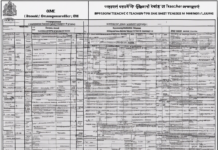Introduction
A cricket wicket is a vital component of the game, serving as the target for both bowlers and batsmen. It comprises three vertical wooden posts called stumps, which are fixed into the ground at specific distances apart. Understanding the significance of stumps in cricket and how they contribute to the game’s dynamics is essential for players and fans alike.
The Anatomy of a Cricket Wicket
A cricket wicket is made up of three main elements:
1. Stumps: Vertical wooden posts that are placed at each end of the pitch. Each stump is about 28 inches in height and has a cylindrical shape.
2. Bails: Two small wooden pieces that sit on top of the stumps. Bails dislodge when the stumps are hit by the ball, signaling that a batsman is out.
3. Crease: The lines that mark the batsman’s safe zone. The popping crease is where the batsman stands, while the return crease extends perpendicular to the popping crease.
The Role of Stumps in Cricket
Stumps play a crucial role in cricket for several reasons:
1. Target for Bowlers: The primary objective of a bowler is to hit the stumps with the ball. Doing so results in a dismissal, either bowled or LBW (leg before wicket).
2. Fielding Positioning: Fielders use the stumps as reference points to position themselves strategically on the field.
3. Umpire’s Decision: Umpires closely monitor the stumps to determine if a batsman is out or safe.
The Impact of Stump Configuration
The regulations stipulate that the stumps must be positioned a specific distance apart. In a standard cricket wicket, the stumps are set 9 inches apart. This configuration ensures a fair competition between bowlers and batsmen. However, in certain formats like junior cricket or backyard cricket, the stumps may be set closer together to suit the players’ skill levels and abilities.
Maintaining the Integrity of Stumps
Proper care and maintenance of stumps are essential to ensure their longevity and performance on the field. Here are some tips to keep your stumps in top condition:
1. Use Quality Wood: Opt for high-quality wood, such as English willow, to make the stumps durable and resilient.
2. Regular Inspection: Check the stumps regularly for any signs of damage, such as cracks or splinters. Replace any damaged stumps immediately.
3. Storage: Store the stumps in a dry place to prevent moisture damage. Invest in a stump case or bag for protection during transportation.
4. Cleaning: Clean the stumps after use to remove dirt and grime. Avoid using harsh chemicals that can damage the wood.
FAQs (Frequently Asked Questions)
Q1: How many stumps are there in a cricket wicket set?
A: A cricket wicket set consists of three stumps, which are placed at each end of the pitch.
Q2: What material are cricket stumps made of?
A: Cricket stumps are typically made of high-quality wood, such as English willow, for durability and performance.
Q3: How far apart are the stumps in a standard cricket wicket?
A: In a standard cricket wicket, the stumps are set 9 inches apart to provide a fair competition between bowlers and batsmen.
Q4: Can the stumps be set closer together in certain cricket formats?
A: Yes, in formats like junior cricket or backyard cricket, the stumps may be set closer together to suit the players’ skill levels.
Q5: Why are stumps important in cricket?
A: Stumps serve as the primary target for bowlers, help in fielding positioning, and are crucial for umpires’ decisions on dismissals.
Conclusion
In conclusion, stumps are a fundamental element of cricket that significantly influences the dynamics of the game. Understanding the role of stumps, their configuration, and maintenance is key for players, coaches, and fans. By appreciating the importance of stumps in cricket, one can gain a deeper insight into the strategic nuances of this beloved sport.








